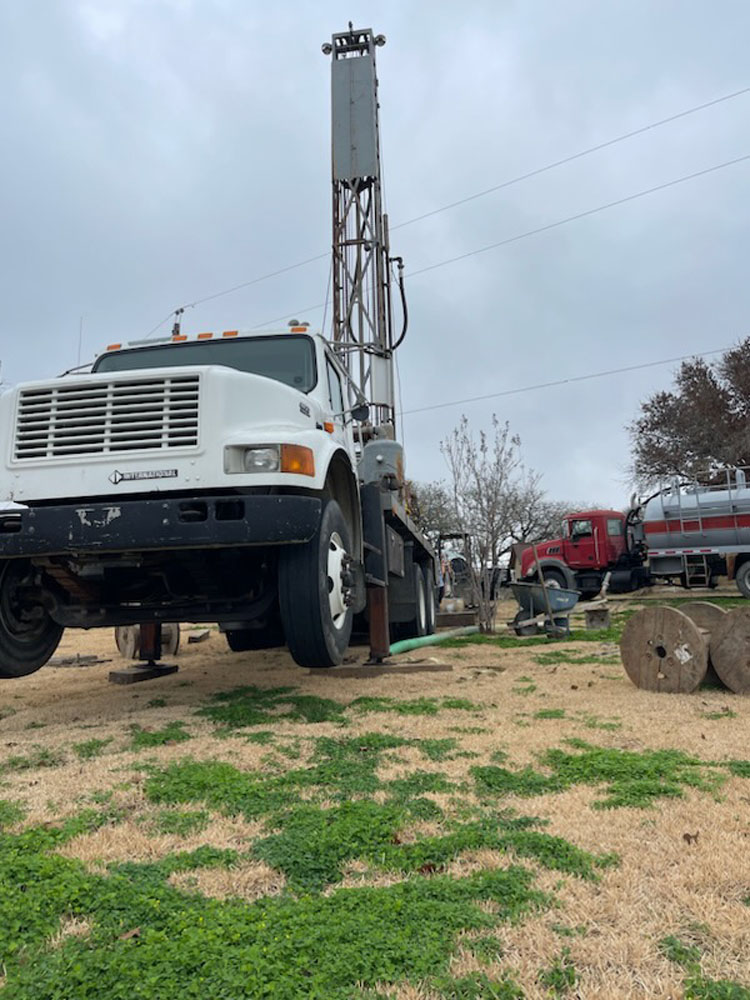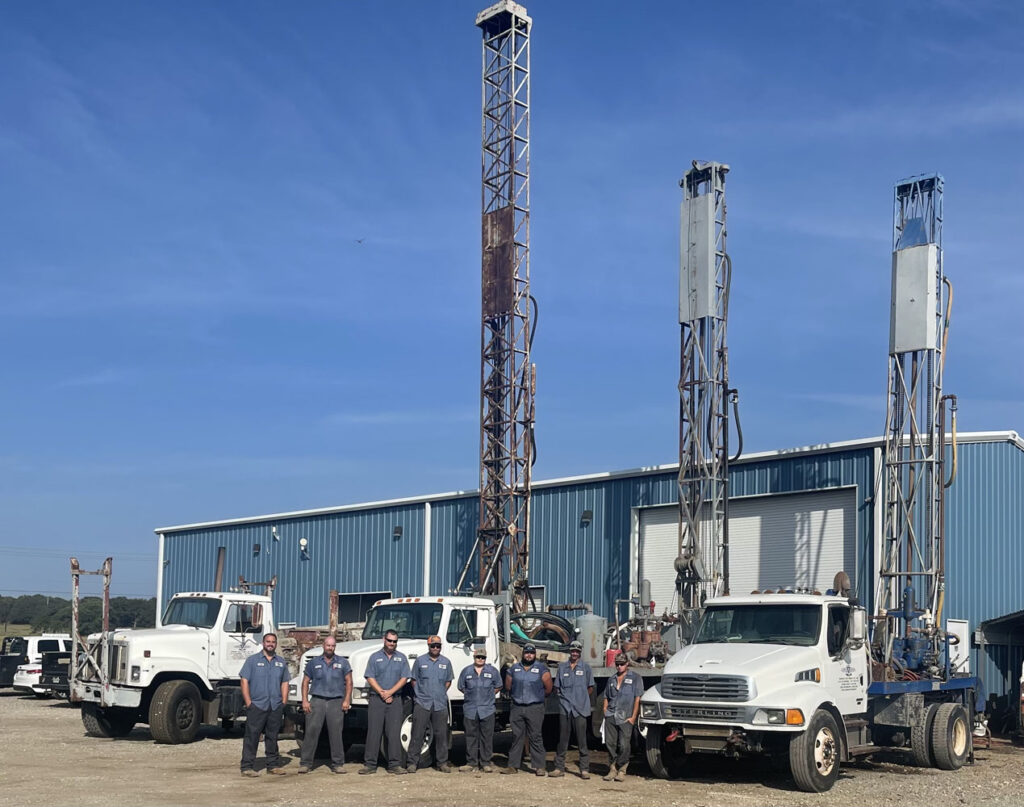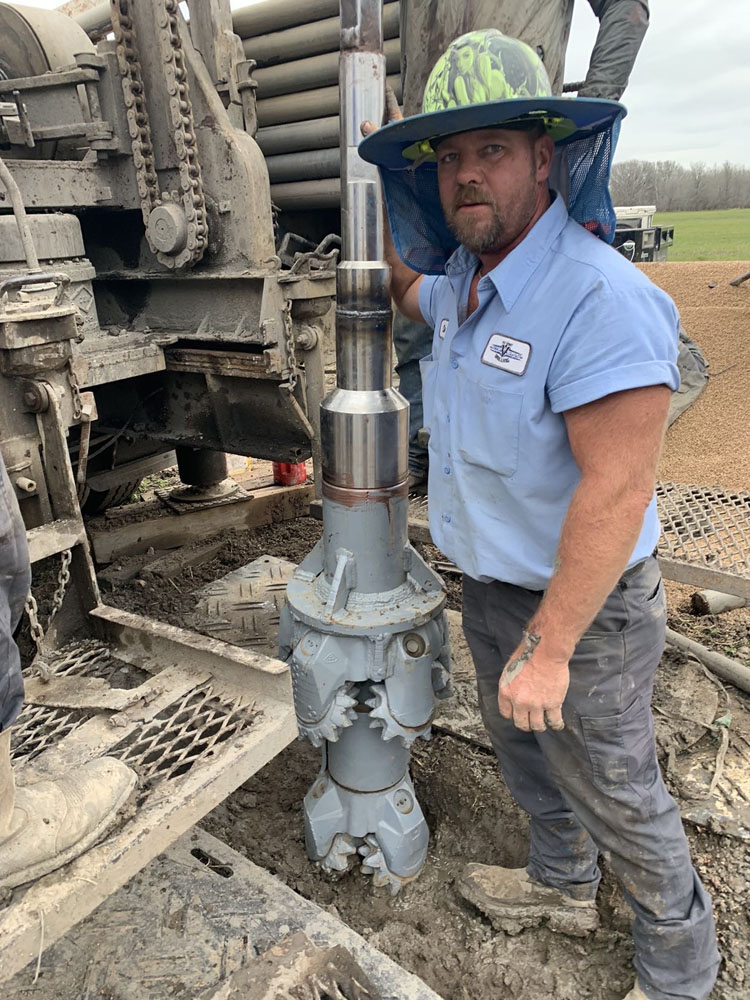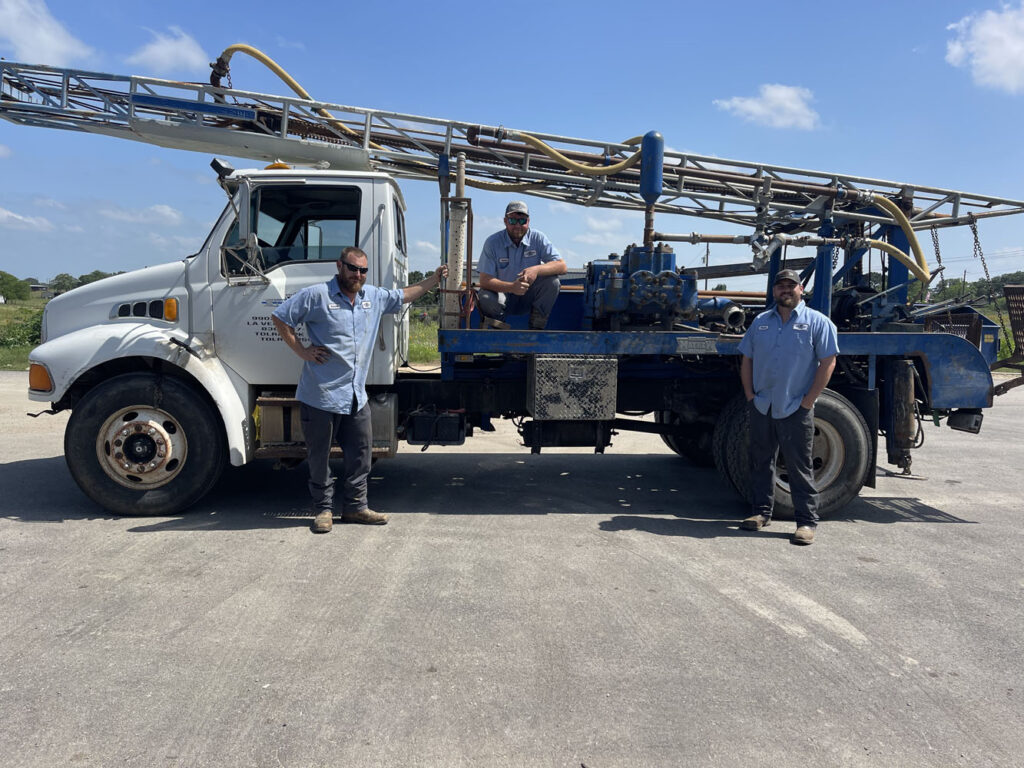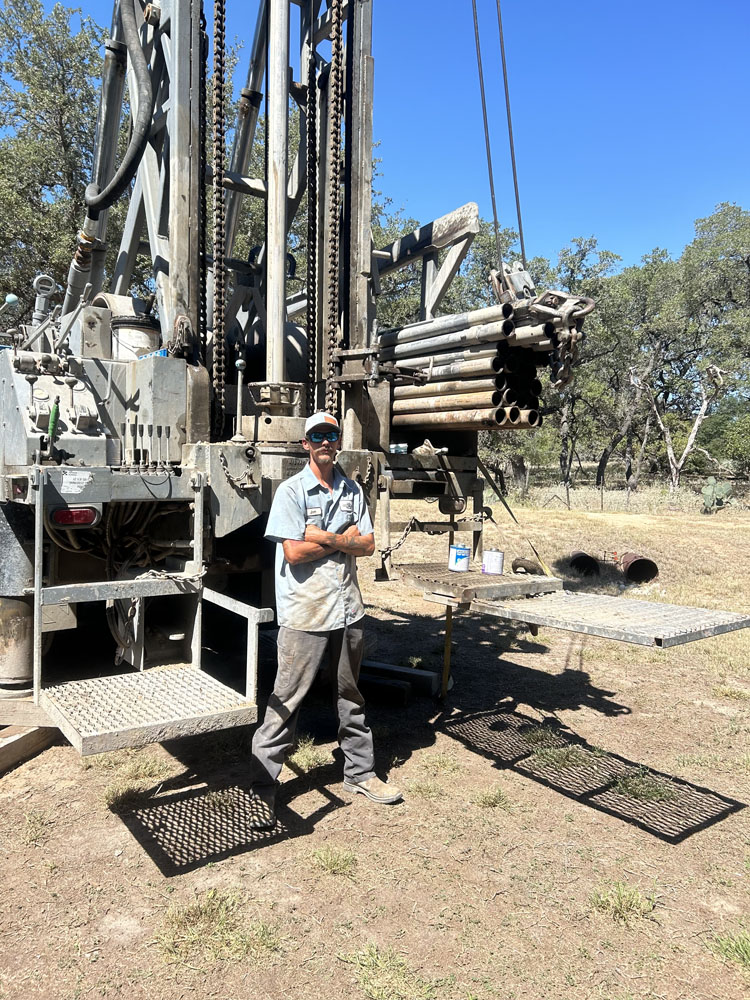SERVICE
Water Well Drilling
Residential water wells offer homeowners independence from municipal water supplies, often providing better-tasting & cost-effective water free of added chemicals. Using advanced drilling equipment & techniques, we can access underground aquifers to provide a sustainable source of water. Given South Texas’ diverse geology, well depths can vary significantly depending on the area & region. Keeping this in mind, our friendly office staff can help you navigate this with a simple phone call. We offer free quotes & site assessments.
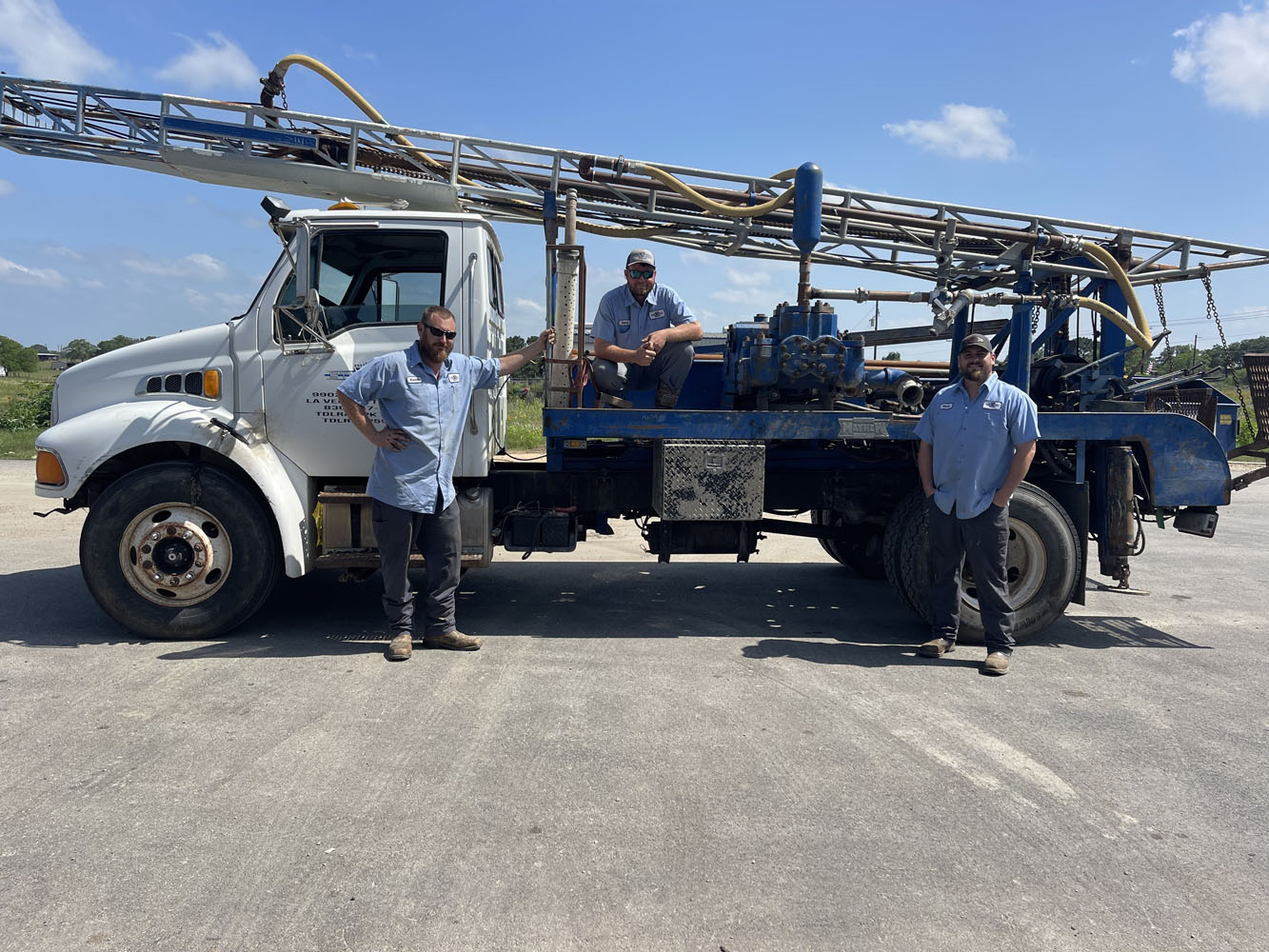
The process
Initial consultation & site Evaluation
- You contact our friendly office staff to discuss your water needs (household use, irrigation, livestock, etc.)
- We will take the given information, research local aquifers to better determine total well depth. We will also be able to see what, if any, local permits will be required.
- If you like the given estimate, we can schedule a site visit where a driller can assess your property, help determine the best drilling location & check for any potential obstacles. We will also take this time to refine & customize the estimate to your property needs (running power & water lines, ect.).
Permitting & Paperwork
- Depending on your location, permits may be required from your local Groundwater Conservation District (GCD) or municipality.
- We will handle the entire permitting process & will inform you of any approvals & fees. We will also keep in contact with you on what paperwork will need to be provided by you to the GCD or municipality.
Well Drilling Begins
- Once all the paperwork & necessary approvals are had, a drilling rig is brought to your property & the crew sets up.
- The well is drilled using mud rotary or percussion drilling. This process usually takes between 4-7 business days to complete depending on depth & ground conditions.
- Your driller will pay close attention to the lithology of the ground that they are drilling through to determine if/when they reach the desired aquifer. Using their experience & knowledge of the area they can determine when sufficient water is located.
Casing, Sealing & Well Development
- Once desired well depth is reached, a protective casing (usually PVC) is installed to prevent the well from collapsing and to keep contaminants out.
- Typically the bottom 40’ of the well casing is screened casing & washed gravel is packed around as your first barrier from the aquifer sands.
- The space around the casing is sealed with a grout or bentonite to protect the ground water quality.
- After casing is installed & surface completion is done the driller will perform the well development, which flushes out drilling debris and brings fresh water into the newly drilled well.
TESTIMONIALS
Our Reputation Speaks for Itself
See Our Work
Residential water wells offer homeowners independence from municipal water supplies, often providing better-tasting & cost-effective water free of added chemicals.


